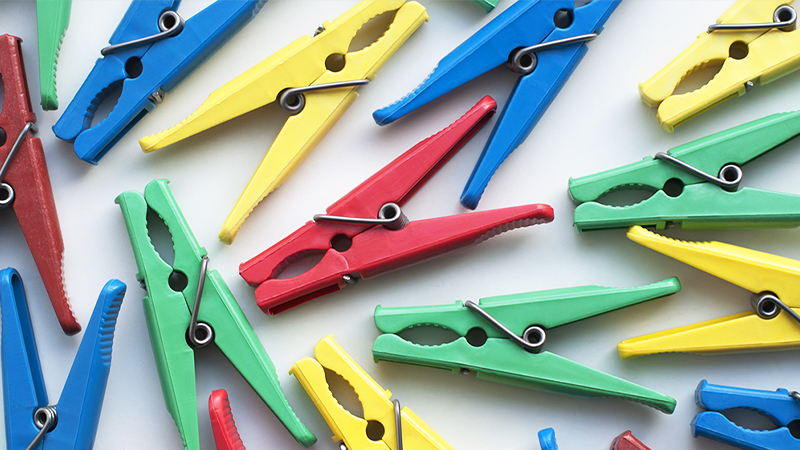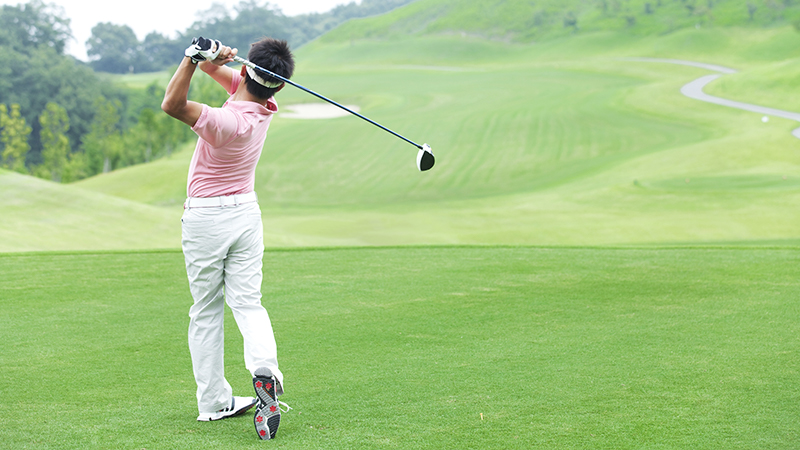Spring and Life
The Role of Springs in Evolving Household Life
When the softness of the human body comes into contact with the hardness of materials, springs always intervene if comfort is demanded. Springs play widespread and profound roles in households, where human lifestyles are rooted.

Simple working
Clothes pegs may be described as the simplest and most basic use of springs.
Spring elasticity is excellently utilized simply by using a ring-shaped wire to hold two pieces of wood or plastic together.
Compressed springs are used for the lead-feeding section of the mechanical pencils we use every day, while thin leaf springs are used for the metal clips that clip pencils and pens onto breast pockets. Similarly, office supplies such as paper clips and paper scissors are simple and convenient products that utilize the spring function.
Electrical products that make housework more enjoyable
Improvements in home life have largely been brought about by the development of electrical products. Various springs are used in electrical products. Vacuum cleaners use a variety of springs, for example, hose springs that keep the hose fixed after it is inserted into the main unit, springs that automatically wind-in the power cord, and indicator springs that measure the rate of dust absorption and indicate it by color. When bread gets suitably toasted and automatically pops out of a toaster, thereby breaking the circuit, such workings are made possible by springs and bimetal. The elevating plate carrying the bread lowers and is stopped by a hook at the bottom. This causes the switch to turn on. When it gets hot, the bimetal works to turn the switch off, and the spring used for raising and lowering the plate causes the bread to pop out.
In most household appliances such as washing machines, microwave ovens, and refrigerators, and devices for making our lives more enjoyable such as televisions, videos, and stereo units, springs are inconspicuously hard at work, pushing, pulling, bending, twisting, and sometimes being twisted while being bent.
Springs for Enhancing Our Playful Spirit

Spring Powered
When a metal plate is elongated and wound around, it can store a large amount of energy. Incidentally, the spiral spring or mainspring, a type of spring, first appeared around the 15th century. Because it is structurally simple and easy to make, it has been used in various ways to power toys.
A spring is a human-powered energy storage device. The spiral spring attached to a toy is wound around a coil, and the force of the coil's uncoiling causes the toy to operate in various ways.
When children cheer at the sight of spring-powered "Choro-Q" miniature cars, this is a reminder of the great power of springs.
Music Box
The music box, which plays a melody when the lid of the box is opened, is said to have been introduced to Japan by Dutch traders in the mid-19th century.
The structure consists of a box with a metal diaphragm in the shape of a comb, which produces a musical scale, and a cylindrical drum called a "kinuta", which has many claws attached to it. When the drum is rotated by a spring mechanism, the claws of the drum bounce off the diaphragm to produce a melody. A diaphragm with a long slit produces low notes, while a short slit produces high notes.
When the top lid of the music box is opened, a clasp is released, causing the wind spring to start rotating, and the mainspring to start moving, but when the lid is closed, the rotation stops and the power remains stored in the mainspring.
Mainsprings, which can store large amounts of elastic energy in a small space, have also been used in clocks, phonographs, and other devices.
Bamboo Work
Bamboo has also been used as a material for toys since early times. Taking advantage of bamboo's ability to return to its original shape after being bent or twisted, people have played with bamboo guns, bamboo wheels and so on.
Among the bamboo crafts that were popular among children in the past, some such as "climbing monkeys" utilize the elasticity of bamboo to humorous effect. A U-shaped bamboo is passed through a shaft, and a monkey doll is placed on top of the U-shaped bamboo. The elasticity of the bamboo allows the monkey to smoothly climb up the shaft. Taishakuten Temple in Shibamata, which is famous for the movie character Tora-san, sold these monkeys as a good-luck charm on the day of the Koshin (57th day of the Chinese sexagenary cycle), and they became very popular.
Sports that Play on Springs
There is an inseparable relationship between sports and springs. Sports are a way to use the body's elasticity or innate spring. Sports help build a healthy and strong body and at the same time relieve stress.
Of course, many springs are used in sports equipment. Springs support the dreams of mankind to go farther, faster, and higher.

Sports Equipment
In trampoline competition, contestants perform spins and twists in the air while bouncing their bodies on a bed made of strong nylon tape woven into a crisscross pattern tensed by spring coils on a frame. The trampoline platform is a typical example of sports equipment that utilizes springs. The elastic nylon material bounces with and repels the external (human) force to create a spectacle worthy that leads to the trampoline sometimes being described as a "human springs competition". The bed of a mini trampoline for children is made of a single piece of elastic fabric.
Other sports equipment that uses springs includes expanders, grip and back strength meters, pole vaulting poles, basketball boards, diving boards, bows, and many others.
Recently, more attention has been paid to the elasticity of the heels of track and field shoes, and the common use of highly cushioned rubber has contributed to the breaking of records.
Sports and Elasticity
Baseball and golf are two of the most popular sports in the world today.
Whether it be high school or professional baseball, the ultimate scene is the moment when the bat catches the ball at its true center. If you take a picture of this moment with a high-speed camera, you can see that the bat is flexing dynamically. This is the elasticity of the bat, and can be described as a spring effect. The same thing happens in golf too. A ball hit with a driver flies as if it were bounced off the club, but at the moment of impact, you can see it bending like a bow. It is the spring that allows a tool to project a ball much farther than can be thrown directly by hand.
There are also many other sporting goods that utilize "bending," such as fiberglass fishing rods that seem to bend almost to the point of breaking.